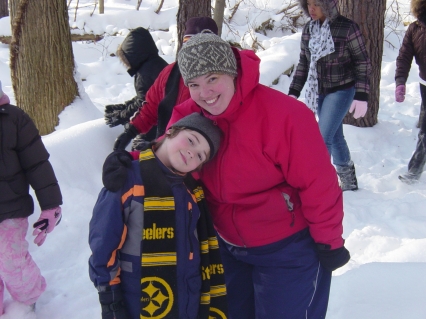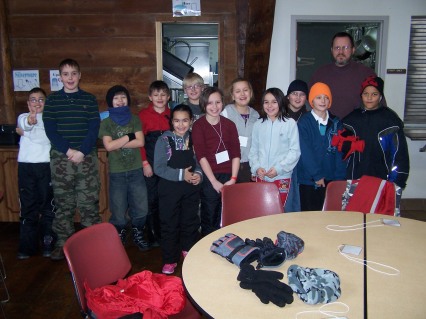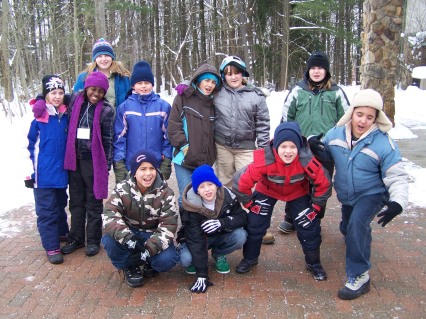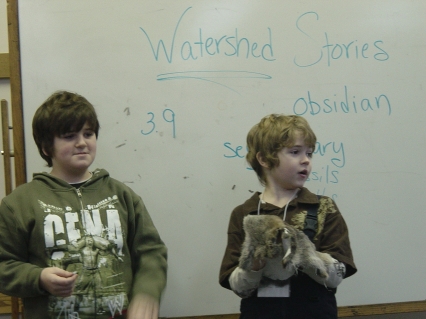Day 1:
I was at the school early and helped kids struggling with their big suitcases to take them to the gym for storage until the buses got here. There were three schools involved, and we were second on the pick-up list. In an extraordinarily calm and orderly fashion, the kids got their belongings and boarded the bus once it arrived. I had decided to drive on my own in case I had to leave early, so I followed the caravan to our last stop, Longfellow School. Once we picked up the last of our group, we were on our way to Peninsula. The drive was pleasant, about an hour, and it was the last quiet, reflective time I would have by myself for the next four days.
Upon our arrival, we unloaded the buses to our respective dormitories; girls in one and boys in another. We had about an hour where the kids were given an orientation with staff, and the adults were also given their own orientation. We were given a list of all the things we would need for the week and a schedule of events. There were 5 groups that the kids were divided into and one to two adults were assigned to those groups. I was assigned with another mom to a group of 10 kids, and after orientation we set out to the dining hall to meet them. Lunch was already underway when we got there and we were soon into full swing of the camp experience. At each meal, the kids scrape any food waste into a bucket, and also pour any liquid waste into another, and the amounts are weighed. They really seemed amazed that there was a tangible amount of waste that they made every meal. I doubt many of them had ever thought about what happened to the food they left on their plates after eating before.
After lunch, we met with our first instructor, Erin, who taught us about the watershed, and how all water, including rain and snow, runs downhill and eventually ends up in Lake Erie. She brought out a topographical map of Cuyahoga Valley National Park, and the kids got to see the different terrain of the area as well as a better understanding of the whole watershed concept. It was very obvious how the water would go from the higher parts to the small creeks and then to the Cuyahoga River within the park. She then decided that the best way to see this topography was to experience it first–hand, leading to the first of many hikes we went on throughout our stay. I would like to say that she took it easy on us, but sadly, I cannot. As a city-dweller, I can count the number of hikes I have taken in the woods in the past 20 years on one hand. Add a hike in 12-18 inches of snow in the woods, and, well, this was the first one in a very, very long time. The paths were clearly marked and had obviously been walked recently judging by the packed-down snow, but they seemed to go on and on. They also, strangely, seemed to only go uphill. I knew that what goes up must come down, so as I huffed and puffed through a 40 minute hike, I kept telling myself that whatever I was doing was nothing in comparison to those poor souls on “The Biggest Loser” on TV. Small consolation. We all made it and had a chance to see some terrific views of nature. When the class ended at 4pm, we had some free time until supper, and one of the teachers brought out a small TV to watch the inauguration of President Obama, noting that TV was usually never an option while at camp, but the inauguration was a part of history, and it would be OK just this once. I was grateful to sit and allow my quivering muscles to take a rest, sure that the last part of the day would be less taxing. Ha.
After 5pm dinner, the staff announced that we would be taking a night hike through the woods to see if we could hear the sounds of the animals and birds indigenous to this area. We had a chance to hear some recordings to help us learn what to listen for, and then we were off. Our staff person for the evening was Keith, and he had all kinds of great things planned. All of them involved hiking and snow. Sigh. We began with a great adaptation of “Tag” called “Firefly,” where one kid would get a small flashlight while standing in a circle with all eyes closed. Then everyone would fan out in the snow and when he gave the signal, the person with the flashlight was to blink it on and off quickly. The others were to try to see the flicker and catch the “firefly.” They enjoyed running around with that for well over a half an hour. We were then asked to participate in a Seton hike, named after a man who believed that the best way to experience nature was to be by one’s self and completely silent. Keith started out on the trail, and each child followed in about 30 second staggered increments. We had a few kids who were bit creeped out by this, so the chaperones each had someone to walk with. The pace was much more leisurely so my muscles weren’t quite so miffed at me by the end. We got to hear some coyote calling each other and a few birds. After the walk was a campfire with stories, songs, and an apple for snack. Quiet hours began at 8:30 and lights out was by 10. We had a few homesick girls to comfort who had never been away from home. I was told that this happens every year and was quite normal for this age. The adults were mostly in bed by 11, having dealt with the usual flashlight tag, giggling, and note passing.

Keri and Devin enjoying the snow





You must be logged in to post a comment.